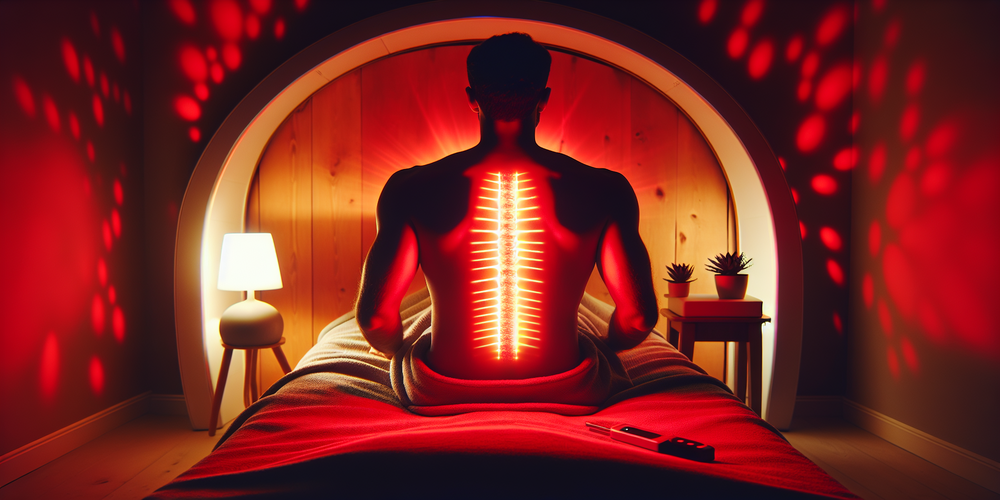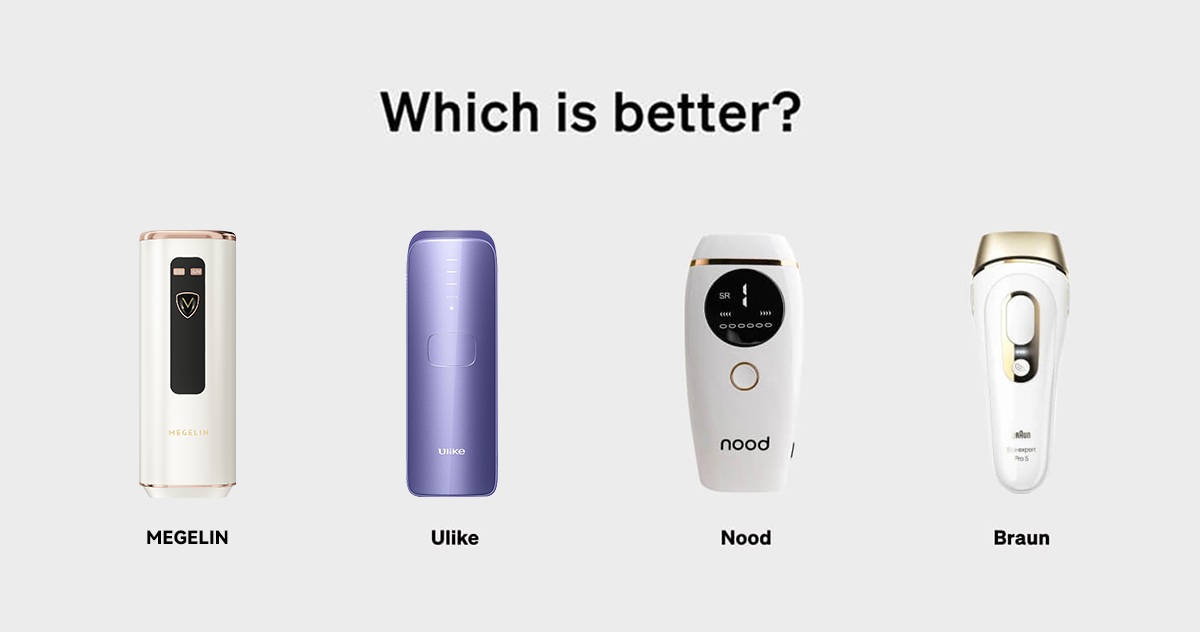
Red Light Therapy for Back Pain: A Natural Solution to Chronic Pain
2MegelinBack pain, a common issue affecting many, leads to discomfort, reduced quality of life, and a search for effective solutions. Among the many treatments, red light therapy for back pain stands out as a non-invasive option offering pain relief, muscle recovery, and tissue repair. This natural solution uses specific wavelengths of light to boost cellular energy and ATP production, aiding the natural healing process.
This article explains the causes of back pain and how red light therapy is an ideal remedy. It covers the benefits of red light therapy, the science behind it, and practical advice on using it for back pain relief. By examining the advantages of red light therapy, including its potential for infrared pain relief, this article highlights an innovative approach to managing chronic pain.
Understanding Back Pain and Its Causes
Back pain, a prevalent issue, affects millions globally, with a significant number experiencing either acute or chronic forms. Acute back pain typically arises suddenly and is often linked to an identifiable injury, lasting no more than six weeks. In contrast, chronic back pain develops more gradually and is characterized by persistent pain that lasts for three months or longer [1][2][3][4][5][6].
Back Pain Types: Acute vs. Chronic
Acute back pain is commonly triggered by sudden movements or injuries that strain muscles and ligaments. Common causes include lifting heavy objects improperly or experiencing muscle spasms [1][2][3]. Chronic back pain, however, may stem from ongoing health issues like arthritis, disc degeneration, or spinal abnormalities, persisting even after the initial injury or condition has healed [2][3][4][5][6].
Common Causes of Back Pain
The spine's complex structure is susceptible to a variety of issues that can lead to pain. Acute incidents such as injuries from sports, accidents, or improper lifting techniques are frequent culprits. Chronic conditions may involve degenerative diseases like osteoarthritis, disc disease, or long-term effects of poor posture and repetitive strain [4][5][7].
Impact of Back Pain on Daily Life
Back pain significantly impacts quality of life, limiting mobility and daily activities. It can lead to psychological stress, including depression and anxiety, particularly in chronic cases where the pain persists over a long period. This ongoing discomfort can affect work performance, social interactions, and overall mental health [8][7][6].
Understanding the specific type and cause of back pain is crucial for effective management and treatment. This knowledge helps tailor interventions that can alleviate pain and improve life quality, emphasizing the importance of addressing both the physical and emotional aspects of back pain.
What is Red Light Therapy?
Red light therapy (RLT), also known as photobiomodulation (PBM) or low-level light therapy (LLLT), is a treatment that utilizes specific wavelengths of red and near-infrared light to penetrate deep into tissues. This therapy is designed to stimulate healing, relieve pain, and reduce inflammation by enhancing cellular function and repair [9][10].
Science Behind Red Light Therapy
The effectiveness of red light therapy hinges on its ability to activate cytochrome c oxidase within the mitochondria—often referred to as the "powerhouses" of cells. This activation helps increase the production of adenosine triphosphate (ATP), the energy currency of the cell, which in turn can improve cell function and accelerate repair processes [9][10]. The therapy uses wavelengths between 600 to 1300 nm, ensuring deep penetration and optimal absorption by the body’s tissues [11].
How Red Light Therapy Works
Red light therapy devices emit a specific spectrum of light that is absorbed by the mitochondria in the cells. This absorption stimulates the mitochondria to produce more ATP, which can lead to faster cell regeneration and healing. The light is delivered through devices equipped with LEDs or lasers and is applied directly to the skin, where it is absorbed by deeper tissues [10][10].
Benefits of Red Light Therapy for Pain Relief
Studies have shown that red light therapy can be beneficial in treating various forms of pain associated with inflammation, such as arthritis and tendinopathy. It helps in reducing inflammation, accelerating tissue repair, and relieving pain. The therapy is particularly noted for its ability to improve circulation, enhance tissue oxygenation, and facilitate the healing of wounds [10][12]. Additionally, it has been found effective in treating muscle and joint pain, stiffness, and injuries by promoting faster recovery and reducing inflammation [13][14].
By harnessing the natural processes of the body's cellular mechanisms, red light therapy offers a non-invasive, safe, and effective method to manage pain and aid in muscle recovery, making it a valuable treatment option for those suffering from chronic back pain and various musculoskeletal disorders.
How to Use Red Light Therapy for Back Pain
Choosing the Right Device
When selecting a red light therapy device for home use, individuals should consider devices that emit wavelengths between 630-850 nanometers for optimal therapeutic effects [15]. It is crucial to choose FDA-listed or cleared devices to ensure safety and efficacy [15]. Versatility and ease of use are also important; flexible pads that can be used on different body areas enhance the device's utility [15].
Step-by-Step Guide for Home Treatments
To begin using red light therapy at home, first ensure the right device is purchased [15]. Set up the device according to the manufacturer's instructions and cleanse the skin before use [15]. Position the device close to the skin, ideally at a distance that feels comfortable yet effective, and use it for recommended durations, typically between 10-20 minutes per session [15][16]. After each session, it is essential to clean the device thoroughly to maintain hygiene and functionality [15].
Frequency and Duration of Treatment
The frequency and duration of red light therapy sessions can vary based on individual needs and the specific condition being treated. Generally, starting with a few sessions per week and adjusting based on personal tolerance and response is advisable [17]. For many conditions, using the therapy three times per day for about 20 minutes each session is often effective [17]. Consistency is key to achieving the best results, and it is safe to use red light therapy daily as long as the recommended guidelines for intensity and duration are followed [17][18].
Conclusion
Through exploring red light therapy for back pain, this article shows how leveraging the body's natural healing pathways can offer significant relief for chronic pain. By understanding the causes of back pain and the science behind red light therapy's effectiveness in enhancing cellular function, individuals can make informed treatment decisions. The discussion highlights red light therapy’s potential not just for pain relief, but for overall well-being.
Red light therapy stands as a promising, non-invasive solution for back pain management, with ease of use and minimal side effects. Its widespread adoption could transform chronic pain treatment, improving quality of life and reducing dependence on pharmaceuticals. Current evidence supports red light therapy as an innovative solution for pain relief and tissue recovery.
FAQs
1. Can red light therapy alleviate chronic pain?
Red light therapy is effective in treating chronic inflammation, which in turn helps alleviate pain in joints and muscles.
2. Is red light therapy beneficial for back pain?
Yes, red light therapy enhances biostimulation, which speeds up the body's healing processes. It is effective in relieving minor muscle and joint pain and stiffness, minor arthritic pain, and muscle relaxation. It is also helpful for post-workout soreness, sports injuries, backaches, arthritis, and stiffness.
3. What is the recommended duration for red light therapy to treat back pain?
For optimal results, it is generally recommended to undergo three sessions of red light therapy per day, each lasting about 20 minutes. Some individuals might need longer or more frequent sessions to achieve the desired outcomes.
4. Does red light therapy help with degenerative disc disease (DDD)?
Red light therapy is believed to be beneficial for degenerative disc disease as it can help the spinal discs regain flexibility by targeting the degeneration of the extracellular matrix, a key factor in disc flexibility.
References
[1] - https://www.spineandrehab.com/blog/what-are-the-differences-between-acute-and-chronic-back-pain/
[2] - https://my.clevelandclinic.org/health/articles/12051-acute-vs-chronic-pain
[3] - https://www.dynamicsphysicaltherapy.com/Newsletters/Full-Articles/Acute-vs-Chronic-Back-Pain/a~30484/article.html
[4] - https://www.mayoclinic.org/diseases-conditions/back-pain/symptoms-causes/syc-20369906
[5] - https://www.niams.nih.gov/health-topics/back-pain
[6] - https://www.who.int/news-room/fact-sheets/detail/low-back-pain
[7] - https://www.sciatica.com/blog/everyday-activities-that-can-cause-back-pain/
[8] - https://coastalorthopedics.com/blog/how-back-pain-can-affect-your-quality-of-life/
[9] - https://www.ncbi.nlm.nih.gov/pmc/articles/PMC5523874/
[10] - https://www.webmd.com/skin-problems-and-treatments/red-light-therapy
[11] - https://www.ncbi.nlm.nih.gov/pmc/articles/PMC3926176/
[12] - https://www.ncbi.nlm.nih.gov/pmc/articles/PMC9980499/
[13] - https://www.hellophysio.sg/treat-back-pain-with-red-light-therapy/
[14] - https://www.ncbi.nlm.nih.gov/pmc/articles/PMC2539004/
[15] - https://healthlightllc.com/2023/03/22/red-light-therapy-for-home-use/
[16] - https://platinumtherapylights.com/blogs/news/red-light-therapy-how-often
[17] - https://healthlightllc.com/2023/03/28/how-often-should-you-do-red-light-therapy/
[18] - https://www.southbaychiro.com/blogs/how-often-should-you-do-red-light-therapy-to-treat-pain.php











